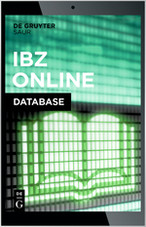- 04 June 2021
Article/Publication Details
Views: 2141
SICHÜBERLIEFERUNG: RE-MOVING THE HISTORY OF BEING AS PRESENCE
| Title in the language of publication: | SICHÜBERLIEFERUNG: RE-MOVING THE HISTORY OF BEING AS PRESENCE |
| Author: | KIMIYO MURATA-SORACI |
| Issue: |
HORIZON. Studies in Phenomenology. Vol. 10, №1 (2021), 61-70 |
| Language: | English |
| Document type: | Research Article |
| DOI : 10.21638/2226-5260-2021-10-1-61-76 | PDF (Downloads: 1626) |
Abstract
How are we to responsively belong to tradition? This paper retrieves the concept of self-tradition (Sichüberlieferung) in Heidegger’s magnum opus Being and Time (1927). We will take as a guiding light Heidegger’s designation of a mode of his phenomenology as “phenomenology of the inapparent” expressed in the 1973 Zähringen Seminar. We will pay special heed to the function of the middle voice, neutrality of Da-sein, and tautology in the question of Being and history and bring to light the relation between authentic temporality and authentic historicity in a tautological turning of the selfsame. We will make a remark on the delay of Da-sein’s authentic historicity in the light of the “self-tradition” which marks Heidegger’s non-metaphysical response to the heritage of metaphysics of presence. In the wake of the phenomenology of the inapparent, we will turn to Derrida’s 2008 text The Animal that Therefore I Am to explore Derrida’s different approach to free the “I am” from that of Heidegger’s Da-sein whose being is set in Jeweilig-Jemeinigkeit. We will show how Derrida’s invention of animot enables him and us to speak with the voices of our non-human animal others and enables us to free ourselves from the fixities of presence of the present in our thought, language, and sensitivity. In a relay of the two philosophers’ reading of us and their ways of self-overcoming of man as rational animal, we will learn to be in question and to learn to relate to one another without reducing one to the other and other to the one.
Keywords
repetition, ek-sistence, ecstatic temporality, authentic historicity, self-tradition, the middle voice, tautology, animot.
References
- Courtine, J-F. (1993). Phenomenology and/or Tautology. In J. Sallis (Ed.), Reading Heidegger (241-257). USA: Indiana University Press.
- Dastur, F. (1990). Heidegger et la question du temps. Paris: Presses Universitaires de France.
- Dastur, F. (1994). La mort. Paris: Hatier.
- Derrida, J. (1972). Marges De La Philosophie. Paris: Les Editions de Menuit.
- Derrida, J. (2008a). The Animal that Therefore I Am. USA: Fordham University Press.
- Derrida, J. (2008b). Psyche: Inventions of the Other. Vol. II (P. Kemuf & E. Rottenberg, Eds.). USA: Stanford University Press.
- Derrida, J. (2016). Heidegger: The Question of Being & History (G. Bennington, Trans.). USA: The University of Chicago.
- Heidegger, M. (1956). Was Ist Das-Die Philosophie? Germany: Neske.
- Heidegger, M. (1984). Early Greek Thinking (D. F. Krell & F. A. Capuzzi, Trans.). USA: Harper & Row Publishers.
- Heidegger, M. (1985). History of the Concept of Time (T. Kisiel, Trans.). USA: Indiana University Press.
- Heidegger, M. (1992a). The Concept of Time (W. McNeill, Trans.). USA: Blackwell.
- Heidegger, M. (1992b). Parmenides (A. Schuwer & R. Rojcewicz, Trans.). USA: Indiana University Press.
- Heidegger, M. (1993). Basic Writings (D. F. Krell, Ed.). USA: HarperCollins Publishers.
- Heidegger, M. (1996). Being and Time (J. Stambaugh, Trans.). USA: SUNY University Press.
- Heidegger, M. (2003). Four Seminars (A. Mitchell & F. Raffoul, Trans.). USA: Indiana U Press.
- Maly, K. (1993). Reading and Thinking: Heidegger and the Hinting Greeks. In. J. Sallis (Ed.), Reading Heidegger (221-240). USA: Indiana University Press.
- Scott, C. (1987). The Language of Difference. USA: Humanities Press International, INC.
- Scott, C. (1996). On the Advantages and Disadvantages of Ethics and Politics. USA: Indiana University Press.

This work is licensed under a Creative Commons Attribution-NonCommercial 4.0 International License.

|
|
|
|
|

|
|
|
|
|

|
|
|
|
|
|
|
|
|
|
|
|
|
|
|
|
|
|
|
|
|
|

|
|
|
|
|
|
|
|
|
|
|
|
|
|
|
|
|
|
|
|
|
|
|
|
|
|
|
|

|

|
Social networks:





